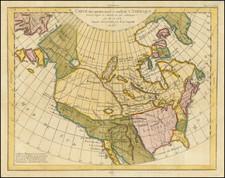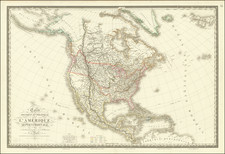Rare map of North America, published shortly the Rush-Bagot Pact (1817), the Convention of 1818 and the Adams Onis Treaty (1819).
The map presents a remarkably informed picture of the hydographical featues in the Pacific Northwest, including a detailed treatment of the rivers on both sides of the Rocky Mountains.
The boundary between the United States and British America (Canada) is now better defined, although a large area in the west is still netural (see below). Similarly, the Adam-Onis Treaty has now established a defined border between the soon to be independent Mexico and Oregon Territory
Further South, California and the Great Basin are still largely unexplored and mythically shown, with and unnamed (previoulsy Rio San Felipe) draining from Teguayo to San Francisco Bay, a second unnamed river from Lake Timpanagos to Trinity Bay and a completely jumbled set of mountains shown east of the Coastal Range. In Southern California, a mythical River des Martyres flows parallel to the Colorado River.
Defining The Northern Border
The Rush-Bagot Pact (1817) and the Convention of 1818 are pivotal treaties between the United States and Great Britain, symbolizing the transition from conflict to cooperation post-War of 1812. The Rush-Bagot Pact, conceived by John Quincy Adams and Viscount Castlereagh and finalized by Richard Rush and Charles Bagot, effectively demilitarized the Great Lakes by limiting both nations to minimal naval forces, marking an early move towards disarmament and reducing potential conflicts in this strategic region.
The Convention of 1818, negotiated by Richard Rush and Albert Gallatin, established the boundary between the U.S. Missouri Territory and British North America along the forty-ninth parallel from Lake of the Woods to the Rocky Mountains, clarifying territorial sovereignty and promoting settlement. This treaty also confirmed U.S. fishing rights off Newfoundland and Labrador, addressed the issue of escaped slaves, and allowed joint settlement of the Oregon Country for ten years.
These treaties underscored the mutual benefits of peaceful coexistence and set precedents for diplomatic resolution of international disputes, contributing to a durable peace and laying the groundwork for future agreements, including the Webster-Ashburton Treaty of 1842. The Rush-Bagot Pact and the Convention of 1818 are foundational in the history of Anglo-American relations, demonstrating the shift towards collaboration and the establishment of the world's longest undefended border.









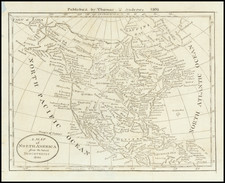
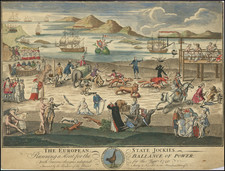
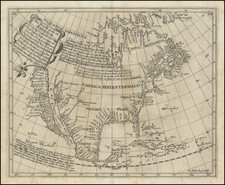
![America [Manuscript Map Showing the Sea of the West!]](https://storage.googleapis.com/raremaps/img/small/41297dm.jpg)
